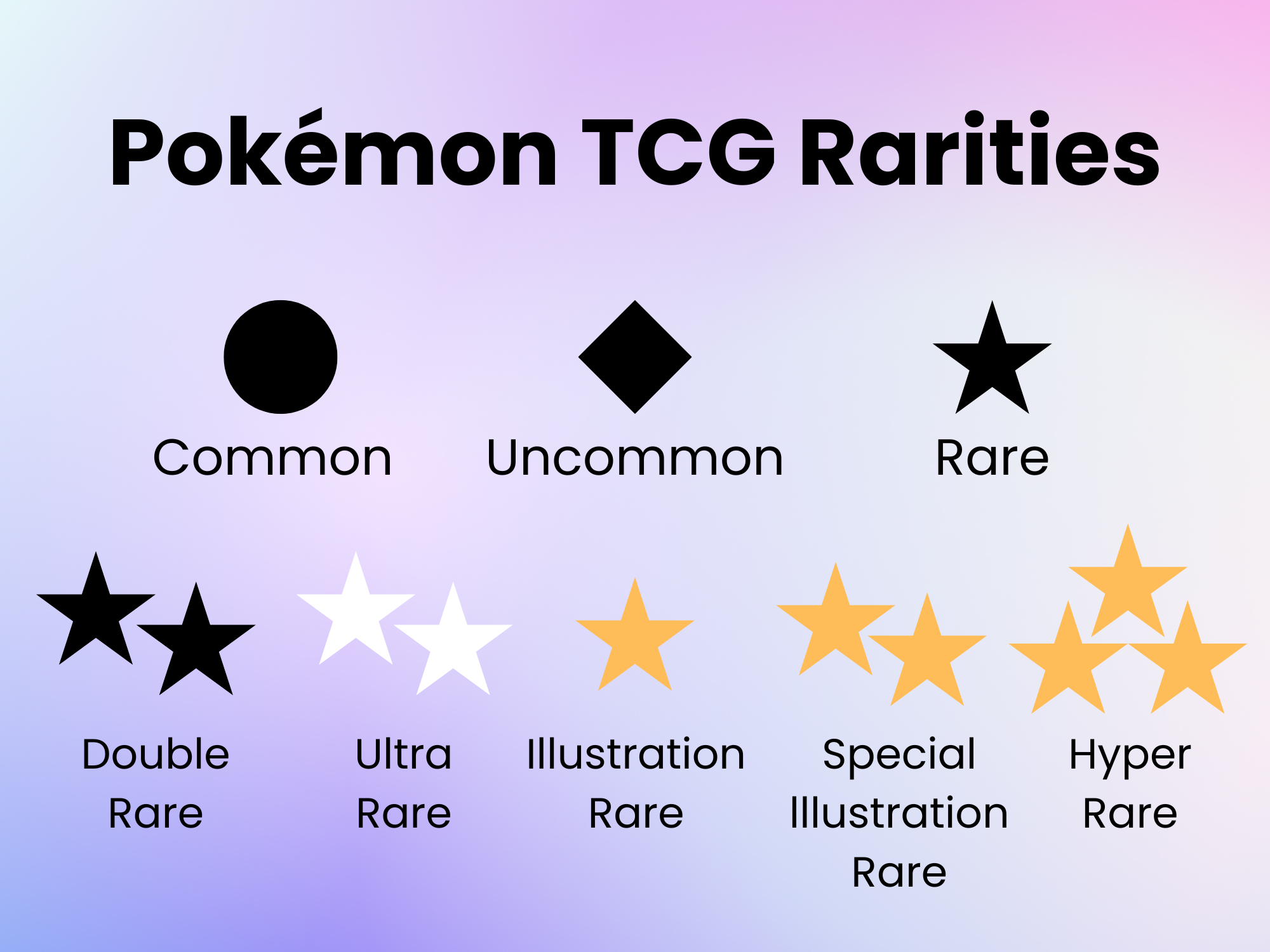
Japanese vs. English Pokémon Card Rarities: What’s the Difference?
If you’ve ever opened both Japanese and English Pokémon booster packs, you may have noticed that the rarities don’t quite match up and you’d be right! Understanding the differences can help you make smarter collecting or grading decisions, especially if you're diving into Japanese sets.
🎴 Rarity Symbols Work Differently
In English cards, rarities are shown by symbols:
-
● = Common
-
◆ = Uncommon
-
★ = Rare

This matches the Japanese labels like RR (Double Rare), RRR (Triple Rare), AR/SAR (Art Rare, Special Art Rare), and UR (Ultra Rare) quite closely.
Japanese cards often skip rarity symbols entirely, especially in modern sets. Instead, rarity is printed as a letter code, like:
-
R = Rare
-
RR / RRR = Double/Triple Rare
-
SR = Super Rare (Full Art)
-
CSR = Character Super Rare
-
UR = Ultra Rare (Gold)
-
SAR = Special Art Rare
📦 Pull Rates Are Not the Same
Japanese booster boxes usually have more predictable pull rates. For example, you’ll often get 1 guaranteed SR or better per box, while English sets can be more random.
This makes Japanese boxes great for collectors who want value and consistency.


